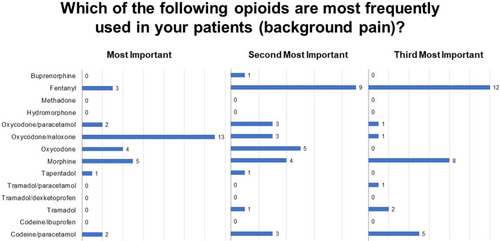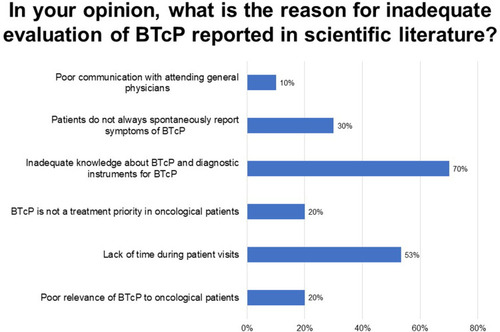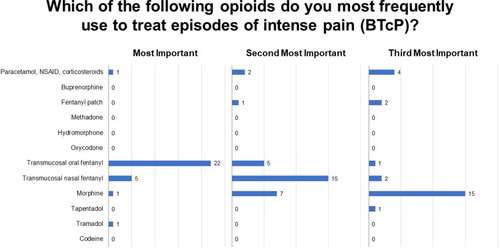Figures & data
Figure 1 Opioids most frequently used in background pain. Ranked responses to question 8 (n = 30, 30, and 30).

Figure 2 Perceived motivations for inadequate evaluation of BTcP in the literature. Responses to question 10 (multiple responses permitted). BTcP, breakthrough cancer pain.

Figure 3 Phase of disease during which episodes of BTcP manifest most frequently. Ranked responses to question 13 (n = 30, 30, and 28). BTcP, breakthrough cancer pain.

Figure 4 Molecules most commonly employed for BTcP. Responses to question 15 (n = 30, 30, and 25). BTcP, breakthrough cancer pain.

Figure 5 Factors guiding treatment selection for BTcP. Responses to question 16 (n = 30). BTcP, breakthrough cancer pain.

Table 1 What to Do and What Not to Do in the Management of Cancer Pain
